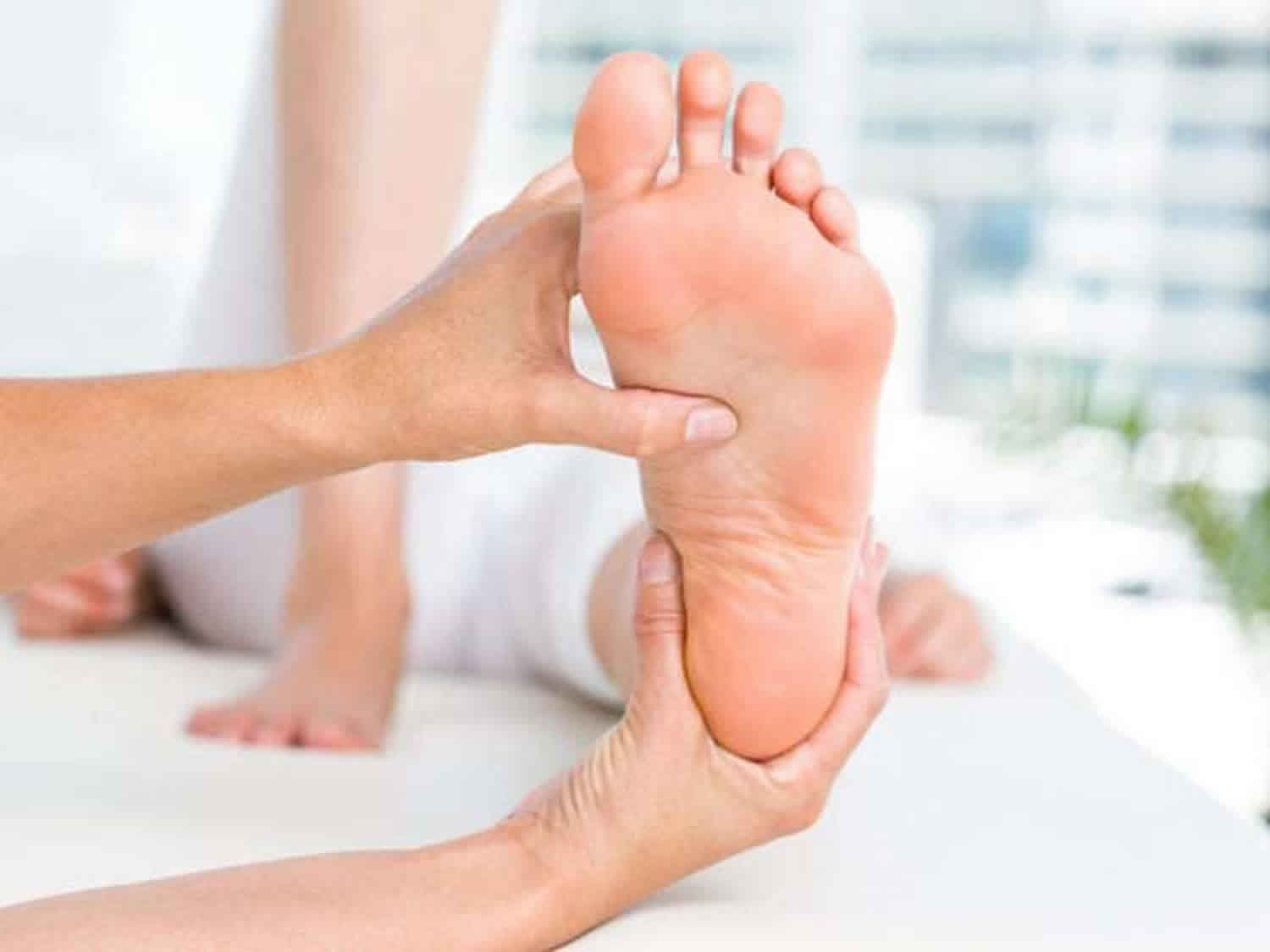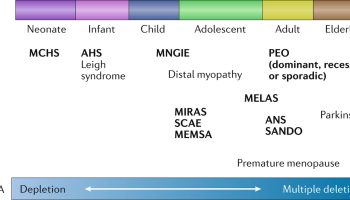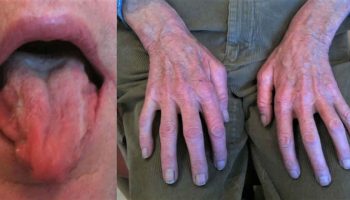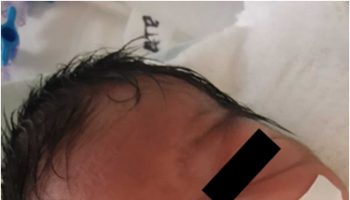Fat pad atrophy
Fat pad atrophy is the gradual loss of the fat pad in the ball or heel of your foot. Fat pad atrophy of the foot are more common in aging population affecting 30% of patients over the age of 60 as you lose the fat layer under your skin and your body produces less collagen and usually presents with severe foot pain during walking 1. Fat pad atrophy is the thinning of the pad that exposes the delicate connective tissue elements to strain and pressure creating inflammation and micro-injury. As a result, your heels may begin to hurt as the day wears on. In poorly managed cases, patients present with severe pain and discomfort.
The heel contains specialized fat pads which protect the foot from harsh repetitive stress generated during the gait cycle. The fat pad is the the thick pad of connective tissue that runs under the ball and heel of the foot and forms the lower aspect of foot. The purpose of the fat pad is:
- To provide cushioning to minimize the effect of friction, pressure and gravitational forces on the foot musculature; and,
- To serve as a mechanical anchor that helps in shifting the body weight without overwhelming connective tissue elements.
These fat pads are divided into a thin, superficial microchamber and a thicker, deeper macrochamber 2. Fat pad atrophy of the deeper macrochamber causes pain with ambulation and can cause substantial disability.
The risk profile and prevalence of fat pad atrophy is fairly comparable in males and females. However, some experts believe that females are relatively more vulnerable to develop this condition because of:
- High heels which do not support the bottom of the foot; and,
- Ill-fitting or very tight footwear which aggravates the risk of injuries such as callus formation. If left untreated, such injuries can lead to various degenerative foot changes.
Fat pad atrophy is best managed conservatively with the use of heel cups, soft insoles, gel pads and soft-soled footwear for comfort. The heel cup helps to centralize and increase the bulk of the soft tissue under the calcaneus.
Fat pad atrophy causes
The causes are not totally clear. Some people just seem to develop this and others do not. Fat pad atrophy can occur in a number of rheumatological problems and runners due to the years of pounding on the heel may be at a greater risk for this. Those with a higher arch foot (pes cavus) also get a displacement of the fat pad which can give a similar problem to fat pad atrophy.
Certain factors that may aggravate the risk of developing fat pad atrophy such as:
- Age: The relationship between aging and fat pad atrophy has been studied. The risk of developing degenerative foot conditions increases with progressing age. With increasing age new cartilage and fat tissue formation decreases which makes the bones weaker and more prone to damage. However, it has not been possible to demonstrate whether fat pad atrophy is a normal part of the aging process or whether it indicates pathology 3. Molines-Barroso et al 4 have not found differences between age groups.
- Collapsed bone: Degeneration or damage to the long bones of the foot can exert significant pressure over the fat pad leading to increased wear and tear damage..
- Footwear: Use of high-heeled shoes can cause as well as aggravate the risk of foot pad atrophy.
- High arch: Certain anatomical characteristics, such as high pedal arches can also cause changes in the foot pad by applying direct pressure on the connective tissue architecture.
- Injury: Injuries caused by significant trauma such as an accident, or other forms of trauma which leads to multiple fractures or surgeries can also increase the risk of developing fat pad atrophy
- Family history: Family history or genetics plays a very important role in development of atrophic and degenerative conditions.
- Arthritis: Inflammation of joints especially in the setting of rheumatoid arthritis aggravates the risk of fat pad atrophy as the bones becomes more vulnerable to damage as a result of ongoing inflammation
- Diabetes: Individuals with persistently high blood sugar levels are vulnerable to develop neuropathy (which leads to numbness and loss of sensation in the foot) 5. The chances of developing pressure-induced atrophic changes increases resulting in fat pad atrophy.
- Steroid injections: Steroid injections in the foot, especially if done too frequently can cause fat pad atrophy.
- Medications: Chronic use of steroids is also known to cause fat pad atrophy in adults.
Fat pad atrophy symptoms
Some characteristic symptoms of fat pad atrophy include:
- Pan in the foot (metatarsalgia) which becomes worse when wearing high heels or walking over a hard flat surface.
- Pain in the foot when a person is in standing position for extended periods of time. (62% of diagnosed sufferers report excessive foot pain after a long walk or long period of standing.)
- Feeling of the development of a mass or swelling in the foot/ heel.
- The ball of foot may become excessively thick due to callus formation.
Fat pad atrophy diagnosis
Currently, fat pad atrophy is a diagnosis of exclusion, and there are no tissue thickness parameters to define the condition.
Fat pad atrophy treatment
Fat pad atrophy is best managed conservatively with the use of heel cups, soft insoles, and soft-soled footwear. The heel cup helps to centralize and increase the bulk of the soft tissue under the calcaneus.
Additional management for fat pad atrophy includes:
- Avoiding activities which puts too much pressure on your foot such as walking on hard, flat or uneven surfaces.
- Avoiding wearing high heel and switch to comfortable footwear.
- Opting instead for low impact weight bearing exercises to optimize healing and regeneration processes.
- Use paddings or insoles to allow even distribution of weight to minimize the direct impact of pressure.
- Chose footwear that supports the foot (especially the heel and arches) to provide cushioning and shock absorbing.
When conventional methods fail, healthcare providers may recommend surgical treatment as a last resort. Existing small clinical trial suggests that fat grafting can restore foot function in patients with heel fat pad atrophy by preserving shock absorbing soft tissue and reducing pain 2. However, these findings will need to be corroborated in a larger sample and longer follow up clinical trials. The fat cells were harvested from patient’s abdomen by manual liposuction, processed and injected by Coleman technique, and introduced into the macrochamber fat compartment 2. Although the fat grafting could increase the tissue thickness under the metatarsal for a prolonged period, data demonstrate that by 6 months, and even more at 12 months, the fat had resorbed under the metatarsal or shifted in position 6. Despite decreasing tissue thickness over time, fat grafting for forefoot fat pad atrophy significantly improves pain and disability outcomes, decreases foot pressures and forces, and prevents against worsening foot pressures and forces. Pedal fat grafting is a safe, minimally invasive approach to treat fat pad atrophy.
There are minimal data describing the use of augmentation of the fat pad with internal techniques. In 1994, a subjective study was performed by Chairman 7. Fifty patients were subjectively interviewed over 9 to 28 months postoperatively after fat grafting in combination with bone surgery. All but two patients had subjective improvement in pain, but no objective data were recorded. Fat was harvested from the calf, with no explanation of how the fat was processed.
Rocchio 8 published a case series of 25 patients treated with acellular dermal graft to treat fat pad atrophy. GRAFTJACKET matrix (Wright Medical, Memphis, Tenn.) was surgically inserted using a “parachute technique” and a tie-over bolster. Patients were non–weight-bearing for 2 weeks and half underwent concomitant bony or soft-tissue operations. Most patients were satisfied with the treatments. Ultrasound thickness demonstrated significant increases over the course of the study, but only nine patients made it to the 6-month ultrasound and only two made it to 12 months, reducing the significance of the long-term conclusions of the study. Objective pain assessments and foot pressure/forces were not measured. A disadvantage of this technique is that incision and dissection of the plantar surface of the foot requires disruption of the natural fibrous septa, potentially leading to neurovascular damage or aberrant scar formation. There remains scant evidence-based research to date on acellular dermis for fat pad augmentation in the foot.
More data have been published about injectable materials, such as silicone 9. Injected liquid silicone increases plantar tissue thickness, decreases plantar pressure, and stimulates proliferation of surrounding collagen fibers. However, after 2 years, the cushioning ability of silicone diminished, resulting in increased plantar pressure 10. Another adverse event of silicone is the potential to migrate and not remain in the allocated fat pad position 9. Although migration appears to be asymptomatic, microscopic droplets can be identified in the groin lymph nodes. In diabetic patients, silicone may be at risk for infection as a foreign body. Other fillers commonly used for facial augmentation have been used off-label by podiatrists and foot and ankle specialists as an off-the-shelf solution to this problem, with no evidence in the literature. The use of 1 to 2 mL of filler per metatarsal head may result in a very expensive temporary solution. Some fillers that require reconstitution with saline may have a dispersion of the product with ambulation that can lead to unpredictable results and likely require multiple treatments with no guarantee of success.
- Dreifuss SE, Minteer D, Gusenoff J. Abstract 27: Foot Rejuvenation with Pedal Fat Grafting: A Randomized Cross-Over Clinical Trial. Plast Reconstr Surg Glob Open. 2017;5(4 Suppl):21-22. Published 2017 May 1. doi:10.1097/01.GOX.0000516548.80748.19 https://www.ncbi.nlm.nih.gov/pmc/articles/PMC5417881[↩]
- James I, Gusenoff B, Wang SS, DiBernardo G, Minteer DT, Gusenoff J. Abstract 137: Fat Grafting Improves Foot Pain Associated with Fat Pad Atrophy of the Heel: Early Findings from a Randomized Controlled Clinical Trial. Plast Reconstr Surg Glob Open. 2018;6(4 Suppl):107-108. Published 2018 May 7. doi:10.1097/01.GOX.0000534002.53419.d4 https://www.ncbi.nlm.nih.gov/pmc/articles/PMC5959632[↩][↩][↩]
- Mickle K.J., Munro B.J., Lord S.R., Menz H.B., Steele J.R. Soft tissue thickness under the metatarsal heads is reduced in older people with toe deformities. J. Orthop. Res. 2011;29:1042–1046. doi: 10.1002/jor.21328[↩]
- Molines-Barroso RJ, García-Álvarez Y, García-Klepzig JL, García-Morales E, Álvaro-Afonso FJ, Lázaro-Martínez JL. Differences in the Sub-Metatarsal Fat Pad Atrophy Symptoms between Patients with Metatarsal Head Resection and Those without Metatarsal Head Resection: A Cross-Sectional Study. J Clin Med. 2020;9(3):794. Published 2020 Mar 14. doi:10.3390/jcm9030794 https://www.ncbi.nlm.nih.gov/pmc/articles/PMC7141333[↩]
- Navarro-Flores E, Cauli O. Quality of life in individuals with diabetic foot syndrome [published online ahead of print, 2020 Jan 28]. Endocr Metab Immune Disord Drug Targets. 2020;10.2174/1871530320666200128154036. doi:10.2174/1871530320666200128154036[↩]
- James, Isaac & Gusenoff, Beth & Wang, Sheri & Mitchell, Ryan & Wukich, Dane & Gusenoff, Jeffrey. (2016). Abstract: A Prospective Randomized Controlled Trial of Autologous Fat Grafting for Pedal Fat Pad Atrophy. Plastic and Reconstructive Surgery – Global Open. 4. 71. 10.1097/01.GOX.0000502978.27817.27[↩]
- Chairman EL. Restoration of the plantar fat pad with autolipotransplantation. J Foot Ankle Surg. 1994;33:373–379.[↩]
- Rocchio TM. Augmentation of atrophic plantar soft tissue with acellular dermal allograft: A series review. Clin Podiatr Med Surg. 2008;26;545–557.[↩]
- Balkin SW. Injectable silicone and the foot: A 41-year clinical and histological history. Dermotol Surg. 2005;31:155–159.[↩][↩]
- van Schie CH, Whalley A, Armstrong DG, Vileikyte L, Boulton AJ. The effect of silicone injections in the diabetic foot on peak plantar pressure and plantar tissue thickness: A 2-year follow-up. Arch Phys Med Rehabil. 2002;83:919–923.[↩]





